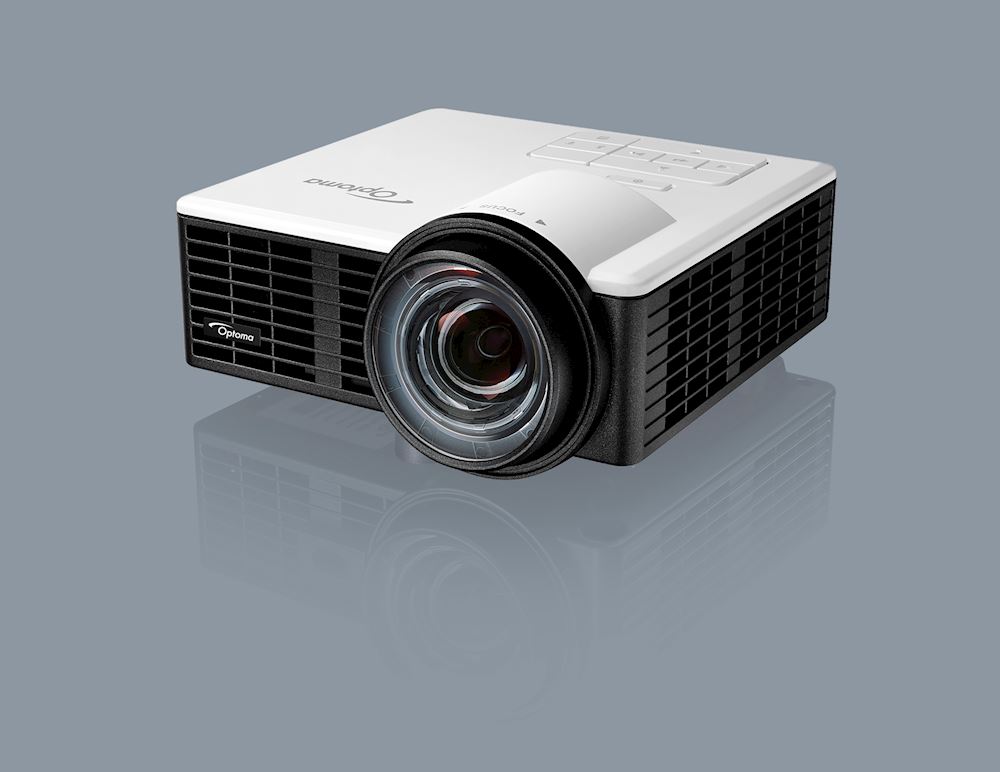
The Vankyo 520W projector is the smallest projector that I have looked at. Another slight nag I had was that the keystone is only vertical correction. The other is the geometric correction tool (GCT) in the Image Express Utility Lite software that has more functions such as 4 points, multi-points and parameter corrections. Those allow you to correct almost all distortions in the image. Image Express Utility Lite for MAC is not supported.
As an instructor, you may need to present information in different classrooms and in different environments. No matter if your presentation will take place in a large classroom or a small classroom and whether you are using a screen, a blackboard, or an improvised wall, one of the challenges you will frequently come across is keystone.
Projector With Horizontal Keystone Correction
What is Keystone Correction?
Have you ever projected an image on the wall and noticed that the image is not rectangular? If so, you understand why keystone correction is necessary.
The reason why this happens is because the projector is not sitting perpendicular to the projection surface. As a projector is turned left, turned right, or tilted up or down, you will see that a trapezoidal image is projected. You are seeing keystoning.
This distorted image is what you as an educator want to avoid. The problem is that in some classrooms there is not the perfect place for you to put a projector. This is where keystone correction comes into play.

Vertical Lens Shift
This feature makes it possible to correct an image where the top and bottom of the image are different lengths. The vertical lens shift allows you to address this issue without needing to move the projector.
You are able to raise or lower the image, taking that trapezoid shape and returning it to a rectangle.
Horizontal Lens Shift
If the left and right sides of the image are different lengths, you can use the horizontal lens shift to correct the problem. Again, this feature allows you to move the image to the left or right, correcting the trapezoid shape without needing to physically move the projector.
There are two types of keystone correction available on most projectors. There is a manual correction and a digital one. The manual correction, as its name implies, is a physical adjustment that happens to the lens.
This correction makes it so that the projector points at an angle that is higher or lower than what it would normally point to if it was on a flat surface. Manual keystoning works great in the majority of circumstances.
The projector does need to be an appropriate distance away from the screen to achieve the desired results.
Digital Keystoning
LCD and DLP projectors are both designed to display digital information. Information that is sent to the projector digitally, such as in a PowerPoint presentation, can be digitally converted and scaled.
Projector Keystone Correction Software Mac Free
Some projectors have added a selected algorithm to the scaling, which allows it to alter the image before the image reaches the lens.
This means that the image will be square, even if the projector is at an angle. This offers more flexibility when setting up a projector, especially if the setup is in a unique environment.
Potential Downsides of Digital Keystoning
If a projector comes equipped with digital keystoning, why worry about manual keystoning? While digital keystoning can be effective in some circumstances, it may add a couple of unwanted changes to your image.
Depending on what you are projecting and the application you are using with the projector, this may or may not be an issue for you.
Digital keystoning will use digital scaling to shrink the long side of the image. When this happens, information is removed from the image.
This leads to scaling artifacts that become easier to see the larger the image is.
For example, if there is text in the area that is being scaled, that text will become fuzzy. This problem becomes less evident if you’re using video or photos.
A second challenge is that the image becomes dimmer. Some of the lumen output is removed because the scaled image is smaller than the native resolution of the projector.
This is why we say that if you are moving a projector from place to place, it’s better to use the manual keystone correction.
If you know in advance that you are going to be moving your projector around, then you may want to start by searching for projectors that have horizontal and vertical shift lenses.
This way, you know you will be able to adjust the projector to meet the needs of the environment that you are in.
You should also look at the amount of correction the projector can provide. For vertical keystone correction, some projectors will offer between 12 and 35 degrees of projection. Keystone correction is a great tool if you need to move your projector from classroom to classroom.

But, remember, it is going to impact picture quality. It can lead to a slightly distorted image, especially when it comes to the sides of the screen.

See related - best HD projectors and best 4K projectors
Product Description
NEC PA653UL Projector – combining laser, LCD and filter-free!
NEC has launched the world’s first filter-free laser projector using LCD technology.
With this unique combination, the brilliant colour brightness of LCD technology is coupled with the laser light source designed for long lasting operation. What’s more, with a completely sealed optical engine there is no filter needed at all. As result, service costs are dramatically reduced and with no dust to contaminate the LCD panels, you can enjoy consistently brilliant colour brightness. In addition, the PA series laser projector delivers incredible picture quality, impressive visualisation capabilities and powerful, cost-conscious installation opportunities.
The PA653UL projector is mainly targeting corporate and higher education users to equip their large meeting rooms, conference rooms and lecture halls.



